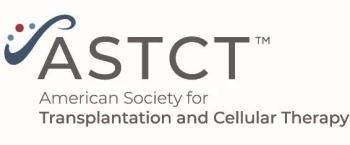
Reduced Retreatment Dose Feasible in Relapsed, Refractory Multiple Myeloma
Prolonged use of bortezomib after treatment with combined bortezomib plus dexamethasone did not result in any significant benefit for patients with relapsed/refractory multiple myeloma compared with bortezomib plus dexamethasone alone, but this less dose-intensive approach could be a feasible option for patients who cannot tolerate the standard regimen.
Prolonged use of bortezomib after treatment with combined bortezomib plus dexamethasone (VD) did not result in any significant benefit for patients with relapsed/refractory multiple myeloma compared with VD alone. This less dose-intensive approach, however, could be a feasible option for patients who cannot tolerate the standard regimen, according to the results of a phase III study
“It was hypothesized that primarily weekly subcutaneous VD retreatment would offer a 6-month improvement in median progression-free survival compared with standard finite twice-weekly subcutaneous VD by providing a more tolerable regimen and thus enabling patients to stay on therapy longer, resulting in prolonged disease control,” wrote researcher Evangelos Terpos, MD, PhD, of the University of Athens School of Medicine in Greece, and colleagues.
However, after the study was initiated, six novel therapies for multiple myeloma were approved; as a result, this study was stopped early due to insufficient enrollment, and the results should be considered descriptive alone.
The study randomly assigned patients 2:1 to either subcutaneous VD followed by prolonged bortezomib (n = 51) or VD alone (n = 27).
With a median follow-up of about 20 months, the median progression-free survival was 7.2 months in the experimental arm compared with 7.8 months in the standard VD arm.
“The lack of the hypothesized improvement in progression-free survival in the experimental arm may also have been associated with imbalances in patient demographics and characteristics,” the researchers wrote. Disease outcomes were similar between the groups, but the experimental arm included a lower proportion of male patients, and patients in this arm had a higher median age. The experimental arm also had a higher rate of patients with Eastern Cooperative Oncology Group performance status 2, a lower proportion of International Staging System (ISS) stage 1 patients “and conversely a higher proportion of patients with ISS stage 3, and a higher proportion of patients with prior exposure to lenalidomide.”
Patients assigned to prolonged bortezomib had an overall response rate of 66% and those assigned to standard treatment had a response rate of 52%. Ten patients in the experimental arm and five in the standard arms achieved a very good partial response (VGPR) or better. Median duration of response was 6.8 months and 5.6 months, respectively.
“The difference in overall response rate was attributable to the higher number of patients who achieved partial response in the experimental arm (≥ VGPR rate was 19% in both arms), while there were similar rates of progressive disease in both arms and thus a higher rate of stable disease in the standard retreatment group,” the researchers wrote.
The most common adverse event was thrombocytopenia, which was grade 3 or worse in 9% of patients in the experimental arm and 22% of patients in the standard arm.
“Based on available data, the less dose-intensive experimental arm resulted in a greater cumulative dose of bortezomib being delivered to patients over a greater period of time, and provided similar efficacy in the context of a reduced safety profile,” the researchers wrote. “These findings reflect those seen in newly diagnosed multiple myeloma patients receiving different bortezomib/melphalan/prednisone regimens, and suggest that the less dose-intensive approach represents a feasible treatment option in this setting, particularly in patients for whom the standard twice-weekly regimen may have limited tolerability.”
Newsletter
Stay up to date on recent advances in the multidisciplinary approach to cancer.















































































